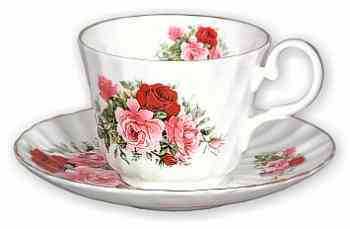 Quick! Who developed the idea for the first the western first tea room? If you guessed Kate Cranston, you were close. It was actually her brother, Stuart. In the1870s, Glasgow, Scotland was almost as important as London in the tea trade. Stuart Cranston was in the tea business. At his shop, he kept a kettle going in order to offer samples of the China tea he sold. He then decided to charge for a cup of tea. After that came bread and cakes. The first tea room was born.
Quick! Who developed the idea for the first the western first tea room? If you guessed Kate Cranston, you were close. It was actually her brother, Stuart. In the1870s, Glasgow, Scotland was almost as important as London in the tea trade. Stuart Cranston was in the tea business. At his shop, he kept a kettle going in order to offer samples of the China tea he sold. He then decided to charge for a cup of tea. After that came bread and cakes. The first tea room was born.
Miss Cranston took the idea a step further. At this time women were venturing out in public on their own more and more. Miss Cranston opened tea rooms that had general space and separate spaces for the ladies. While some places still required an escort or chaperone, her tea rooms were places a woman could go alone or with other women.
The art of decorating one’s home had reached a new popularity at this time. Miss Cranston tapped into that with her association of Charles Rennie Mackintosh. She gave him free hand in designing the interiors of her tea rooms. Miss Cranston’s formula for successful tea rooms was good value, quality and art. Mackintosh’s designs were exciting and slightly weird.
In addition to the extraordinary design and art of her tea rooms, Miss Cranston offered the best food. A menu from 1911, shows the following tea items:
Cup of Tea, small 3d. or large, 4d.
Pancakes or Scones, hot jellied, 2d.
Potato Scones, buttered, 1d.
Cakes, all varities, 2d. each
Sandwiches, varied, 2d.
Snack Pies, hot, 4d.
Cup of Cream Soup, 4d.
Welsh Rarebit and Poached Egg, 6d.
Fruit Tart, 6d.
Peach Tartlet and Whipped Cream, 6d.
Curds and Cream, 6d.
Devonshire Junket, 6d.
Swiss Tart, 6d.
Strawberries and Cream, 6d.
And a Fixed Price Tea, Cup of Tea with slice of Buttered Bread, Buttered Scone and Cake, 9d.
Old English money requires an explanation for some of us. A d. for 'denarius', a Roman silver coin, stands for tuppence which was 2 pennies (20 shillings per pound, 12 pennies in a shilling.)
The menu looks pretty familiar, doesn’t it? The same things are still offered in many tea rooms.
Miss Cranston retired from the tea room business in 1919. Her tearooms survived for several years under different management but most were gone by the 1930s. The Willow Tea Room, 1902, pictured above, was resurrected with reproduction Mackintosh furniture and design. You can even get a cup of tea there.
Tomorrow we’ll look at the many styles of tea rooms today and the foods they offer.




